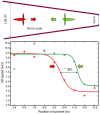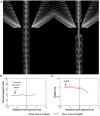Comparison of Visually Guided Flight in Insects and Birds
- PMID: 29615852
- PMCID: PMC5864886
- DOI: 10.3389/fnins.2018.00157
Comparison of Visually Guided Flight in Insects and Birds
Abstract
Over the last half century, work with flies, bees, and moths have revealed a number of visual guidance strategies for controlling different aspects of flight. Some algorithms, such as the use of pattern velocity in forward flight, are employed by all insects studied so far, and are used to control multiple flight tasks such as regulation of speed, measurement of distance, and positioning through narrow passages. Although much attention has been devoted to long-range navigation and homing in birds, until recently, very little was known about how birds control flight in a moment-to-moment fashion. A bird that flies rapidly through dense foliage to land on a branch-as birds often do-engages in a veritable three-dimensional slalom, in which it has to continually dodge branches and leaves, and find, and possibly even plan a collision-free path to the goal in real time. Each mode of flight from take-off to goal could potentially involve a different visual guidance algorithm. Here, we briefly review strategies for visual guidance of flight in insects, synthesize recent work from short-range visual guidance in birds, and offer a general comparison between the two groups of organisms.
Keywords: flight speed; image expansion; optic flow; sensorimotor transformation; visuomotor control.
Figures





References
Publication types
LinkOut - more resources
Full Text Sources
Other Literature Sources

